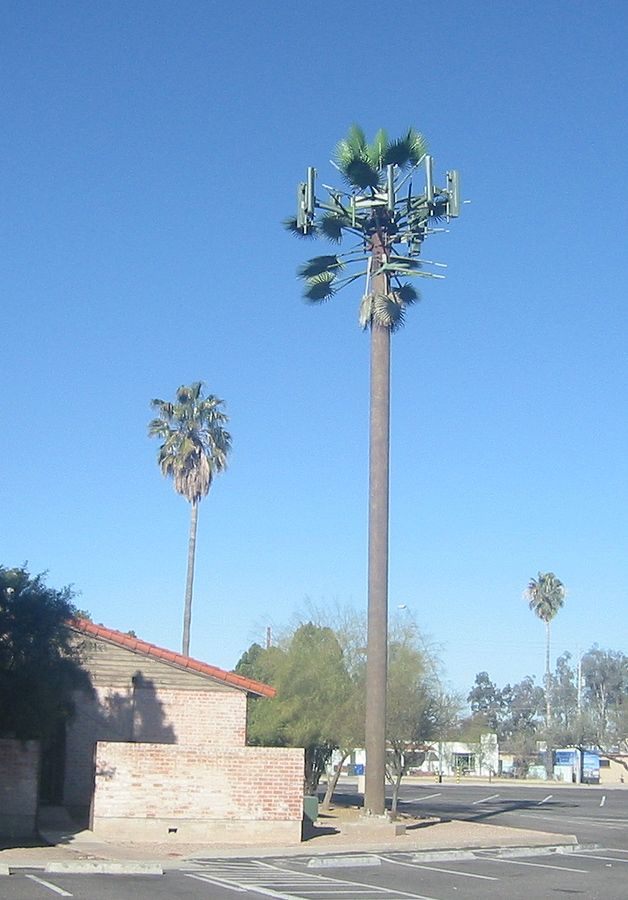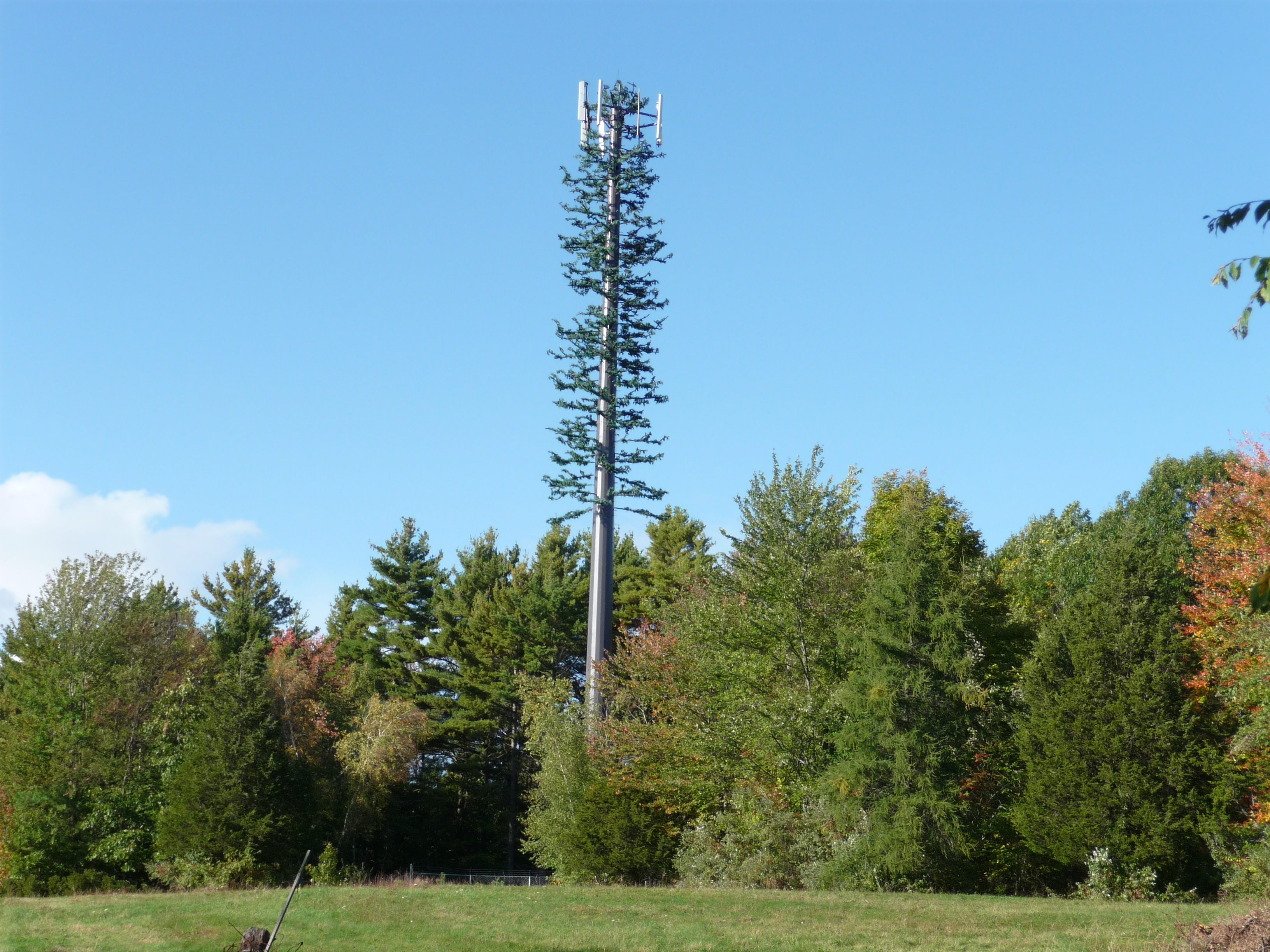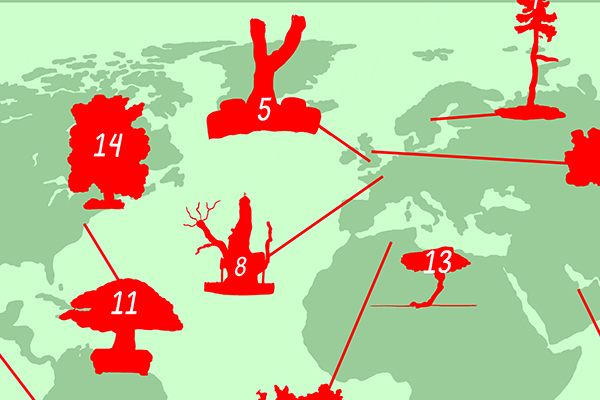Take a Look at America’s Least Convincing Cell Phone Tower Trees
Nothing is natural about these trees.

This cell tower tree in Los Angeles lacks artificial foliage to cover up all the antennae. (Photo: Lord Jim/CC BY 2.0)

All over the world, there are trees that quietly carry our phone messages. They come in variety of species: palm, cypress, fir, elm, pine, cacti. Perhaps you have passed by one of these alien trees before, or spotted them sticking high above the natural treeline. From top to bottom, nothing about these trees is natural.

Despite telecommunications and utility companies’ best efforts, cell phone tower trees are notoriously unattractive. The architecture of these fake trees is also not the least bit convincing. For example, the pine cell towers have metal “trunks” that lack the pliability of natural trees, and support a small tuft of branches and fake foliage that attempts to cover up the hardware underneath.

A pine cell tower tree built by one of the leading companies in the cell tower concealment business in Tucson, Arizona. (Photo: Bill Morrow/CC BY 2.0)
Averaging between 50 to 200 feet, they awkwardly stand above other structures in order to provide good cell phone coverage. Instead of the roots, xylem, and phloem that give real trees life, cell tower trees have amplifiers, transceivers, and antennae that support our mobile devices’ wireless communications.
Most of the trees are built with artificial products such as fiberglass, plastic, and acrylic that are designed to feel like real bark. T-Mobile used 18,000 pounds of artificial branches to create the 155-foot-tall pine cell tower in Muskegon, Michigan, reports Tedium.
“It tends to be when there’s some sensitive landscape or it you’re building it in an area where there’s a beautiful view and you want something to blend in,” a Verizon spokesperson told the Muskegon Chronicle back in 2011 when the cell tower tree was erected.

A cell tower disguised as a palm tree in Tucson, Arizona. (Photo: Gary Minnaert/Wikicommons/Public Domain)
Companies started disguising cell towers as trees in the 1980s to blend the large, obstructive metal structures into the natural environment and make them look more appealing. According to Rhizome, telecommunication companies may have also started camouflaging the technology because of public scrutiny. Some protesters believe that cell towers spew out dangerous radiation, while others have theories that they are used to spy on people.
There are an estimated 1,000 to 2,000 cell phone tower trees in the United States, Vox reports. Larson Camouflage, which built one of the first pine cell towers in 1992, has over 3,000 concealment projects (although the company disguises other objects in addition to cell towers). The fake trees are pretty expensive, too. Cell phone towers already cost a pretty penny (average cost is about $150,000), but dressing the tower up in tree garb adds an extra $100,000.
Take a look at some the most bizarre cell tower trees, below.

A cell tower hidden in a fake cactus. (Photo: FolsomNatural/CC BY 2.0)

Cell phone tower disguised as an evergreen tree to blend into the natural environment of New Hampshire. (Photo: Wikicommons/Public Domain)
Saw this in door county this weekend. Wow the trees there are weird. It’s really a cell tower. pic.twitter.com/Ju5e64rX31
— Jack T Martin (@lakebluffjack) May 1, 2016
One of these trees is not like the other!Are they really fooling anyone w the “cell tower tree”?What do birds think? pic.twitter.com/NegCo41OEZ
— Michael Abbott Jr. (@mykabit) December 5, 2015
I’m sure once they put the top on this saguaro it will look like a real cactus & not a cell tower. #onlyinAZ pic.twitter.com/OVBbTKXFDk
— Barrie Petty (@barizona) August 11, 2014







Follow us on Twitter to get the latest on the world's hidden wonders.
Like us on Facebook to get the latest on the world's hidden wonders.
Follow us on Twitter Like us on Facebook